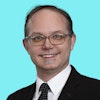Published
August 08, 2017
Nowadays, with news cycles filled with so much noise, some news falls through the cracks. One you probably missed came from the EPA last week: Our air is getting cleaner.

- Nitrogen dioxide has fallen by 56%
- Carbon monoxide has fallen by 77%.
- Sulfur dioxide, a source of acid rain, has fallen by 85%.
- Lead has fallen by 99%.
The report reminds us that environmental improvement and economic growth aren’t mutually exclusive.
As air quality improved, the economy grew 250%, the population grew by 58%, and the number of miles traveled increased by 190% between 1970 (when the Clean Air Act became law) and 2016.
This environmental success would’ve been much harder without technological innovation fueled by economic growth.

In June, EPA Administrator Scott Pruitt announced it would delay enforcing for one year the ozone standard (70 parts per billion (ppb)) set in 2015 by the Obama administration. Environmental groups and states attorney generals quickly filed suit, and the EPA returned to its original October deadline.
This matters for local economies. Besides the regulatory uncertainty, areas with ozone levels higher than the standard will have to implement new local regulations and restrictions on businesses and economic development to reduce the emissions that lead to ozone. Factories might not be built or expanded and local transportation projects could see their federal funds cut off.
This could lead to slower economic growth that impedes the innovation needed for improved air quality.
Congress has a bill in front of them to fix this ozone fracas by pushing back implementing the 70 ppb standard to 2025. The House passed it in July, and it awaits a vote in the Senate.
When proponents of more rules—that have a cost—cry out that the sky will fall without them, remind them about our cleaner air, the technology needed to achieve it, and the economic growth that sustains such innovation.
About the authors

Sean Hackbarth
Sean writes about public policies affecting businesses including energy, health care, and regulations. When not battling those making it harder for free enterprise to succeed, he raves about all things Wisconsin (his home state) and religiously follows the Green Bay Packers.





